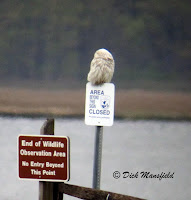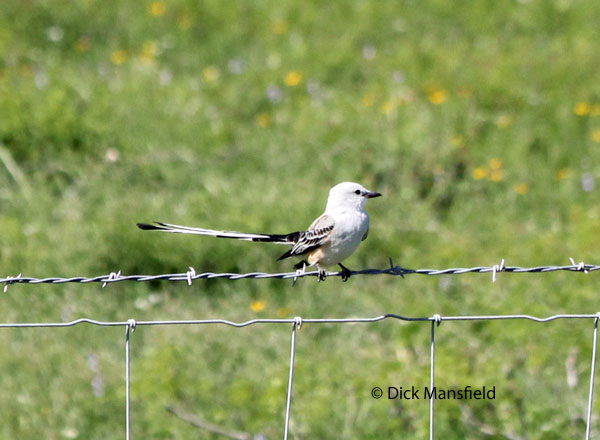As all birders know, Snowy Owls by the thousands have shown up across the northern tier of the U.S. I think I’m the only birder in Vermont who hadn’t seen one, until yesterday. We had some show up in Vermont but I missed them before we left for Texas, and then kept reading about folks throughout New England seeing owls left and right.
Since we returned from the Southwest several weeks ago, there have been Snowy Owls reported at Plum Island. I knew that we had a trip planned to MA for grandparenting in late April/early May and hoped that one would hang around — and it did.
I can’t take the dog on the refuge so Mary dog-sat Thursday and I made a quick run to seek out the Snowy. Two friends from Vermont had seen it the week before and as I approached the Hellcat area, where it had been hanging out, I thought, “With my luck, it probably just headed out.” I met two women coming out and asked and they said, “It’s right up there sitting on a post.”
And sure enough, it was. It kept looking the other way and was pretty bedraggled from the heavy rains of the day before. Dozens of birders watched, took photos, and admired the visitor from the north. Here’s my low-quality photo — never could get it to turn our way.
Here’s a little recap on the irruption of Snowy Owls from Reuters:
“What we’re seeing now — it’s unbelievable,” said Denver Holt, head of the Owl Research Institute in Montana.
“This is the most significant wildlife event in decades,” added Holt, who has studied snowy owls in their Arctic tundra ecosystem for two decades.
Holt and other owl experts say the phenomenon is likely linked to lemmings, a rodent that accounts for 90 percent of the diet of snowy owls during breeding months that stretch from May into September. The largely nocturnal birds also prey on a host of other animals, from voles to geese. An especially plentiful supply of lemmings last season likely led to a population boom among owls that resulted in each breeding pair hatching as many as seven offspring. That compares to a typical clutch size of no more than two, Holt said.Greater competition this year for food in the Far North by the booming bird population may have then driven mostly younger, male owls much farther south than normal.
Research on the animals is scarce because of the remoteness and extreme conditions of the terrain the owls occupy, including northern Russia and Scandinavia, he said.
It was great to finally see a Snowy and add it to my life list. Now, I worry about whether this guy will make it back north. May is very late to be hanging out in Massachusetts even though the food supply is plentiful. I’ll watch the lists and see when he’s headed out.






























